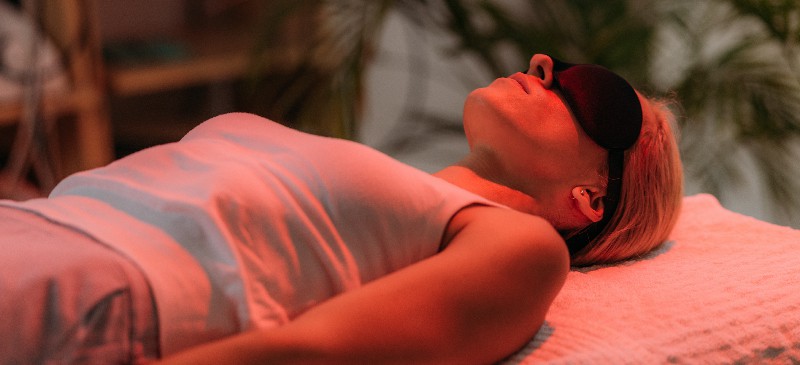This Dr. Axe content is medically reviewed or fact checked to ensure factually accurate information.
With strict editorial sourcing guidelines, we only link to academic research institutions, reputable media sites and, when research is available, medically peer-reviewed studies. Note that the numbers in parentheses (1, 2, etc.) are clickable links to these studies.
The information in our articles is NOT intended to replace a one-on-one relationship with a qualified health care professional and is not intended as medical advice.
This article is based on scientific evidence, written by experts and fact checked by our trained editorial staff. Note that the numbers in parentheses (1, 2, etc.) are clickable links to medically peer-reviewed studies.
Our team includes licensed nutritionists and dietitians, certified health education specialists, as well as certified strength and conditioning specialists, personal trainers and corrective exercise specialists. Our team aims to be not only thorough with its research, but also objective and unbiased.
The information in our articles is NOT intended to replace a one-on-one relationship with a qualified health care professional and is not intended as medical advice.
Red Light Therapy: Does It Work to Boost Overall Health?
May 9, 2023

The year 2020 marked the 60th anniversary for medical laser treatments like red light therapy (RLT) and green light therapy, providing a host of evidence regarding their benefits.
Through emitting red, low-light wavelengths through the skin, red light therapy may naturally jump-start the process of tissue recovery and other forms of rejuvenation. It’s believed to work in such ways as increasing blood flow and stimulating collagen production.
Red light therapies have come a long way, but do they really work? Clinical studies show that, yes, red light box therapies have certain healing capabilities and medical applications, thanks to the way they positively affect the human endocrine and immune systems.
This treatment is now cleared by the U.S. Food and Drug Administration for conditions like chronic joint pain and slow-to-heal wounds, and in the near future, we can expect to see more approvals as research continues to unfold.
What Is Red Light Therapy?
Red light therapy involves having low-power red light wavelengths emitted directly through the skin, although this process cannot be felt and isn’t painful because it doesn’t produce any heat.
Red light can be absorbed into the skin to a depth of about eight to 10 millimeters, at which point it has positive effects on cellular energy and multiple nervous system and metabolic processes. This type of light is considered “low level” because it works at an energy density that’s low compared to other forms of laser therapies.
If you’ve never heard of red light therapy before, you might already be familiar with other terms that are used to describe this treatment, such as photobiomodulation (PBM), low-level light therapy (LLLT), biostimulation (BIOS), photonic stimulation or simply light box therapy.
Although there is still controversy over this treatment and more research is needed, according to some reports, there are virtually no known adverse side effects of red light therapy treatments, but there is a growing list of many anti-aging benefits.
How does it work? A 2012 report published in Annals in Biomedical Engineering stated that red light is used in three primary ways: “to reduce inflammation, edema, and chronic joint disorders; to promote healing of wounds, deeper tissues, and nerves; and to treat neurological disorders and pain.”
It’s been found to help promote stronger immunity and longevity by increasing cell proliferation and migration, as well as modulating levels of cytokines, growth factors and inflammatory mediators.
Leanne Venier — an engineer, scientist and expert in light frequencies and the healing effects of color therapy — explains that red light is naturally attention-getting, energizing, stimulating and “representative of survival, joy and passion” in humans because of how it affects of the central nervous system.
According to her work, along with extensive research done by trustworthy organizations including NASA, red light can trigger the sympathetic nervous system and, therefore, activate the “fight or flight response.”
Being in fight-or-flight mode causes reactions like improved blood circulation, rapid heartbeats, increased sweating, high concentration and so on. Normally we think of activating our stress response as a bad thing, but this can also be healing because it carries nutrients to our cells and controls inflammatory responses.
Benefits/Uses
What is red light therapy used for? Studies have found that some of the ways red light wavelengths work to improve overall health include:
- Increasing energy levels by promoting release of ATP (adenosine triphosphate) from cells’ mitochondria
- Stimulating DNA/RNA synthesis
- Activating the lymphatic system, an important part of our immune system that helps carry waste out of the body
- Increasing blood flow/circulation, thereby helping bring more oxygen and nutrients to our cells and tissues
- Forming new capillaries (small blood vessels)
- Improving natural production of collagen and fibroblasts, important for skin care and joint and digestive health
- Repairing and restoring damaged soft connective tissue
- Stimulating or decreasing inflammation, which helps control our natural healing capabilities
- Lowering effects of oxidative stress/free radical damage, which is associated with many effects of aging
Here’s more about the major red light therapy benefits backed up by scientific studies:
1. Increased Immunity and Reduced Side Effects of Cancer Treatments
Research done by NASA has shown that red light technology can successfully reduce symptoms experienced by cancer patients, including painful side effects caused from radiation or chemotherapy.
Using far red/near-infrared light-emitting diode devices (called HEALS in some studies) has been shown to release long wavelength energy in the form of photons that stimulate cells to aid in healing.
NASA tested whether this treatment could benefit patients with oral mucositis, a very common and painful side effect of chemotherapy and radiation. The researchers concluded that 96 percent of patients experienced improvement in pain as a result of the HEALS treatment.
They stated, “The HEALS device was well tolerated with no adverse affects to bone marrow and stem cell transplant patients….The HEALS device can provide a cost-effective therapy since the device itself is less expensive than one day at the hospital.”
Similar HEALS technology is also now being utilized for the treatment of pediatric brain tumors, slow-healing wounds or infections, diabetic skin ulcers, and serious burns.
2. Wound Healing and Tissue Repair
Light in the spectral range of 600 to 1,300 nanometers has been found to be useful for promoting wound healing, tissue repair and skin rejuvenation, although it does this through a different mechanism of action compared to many other laser resurfacing treatments.
Most laser therapies used in dermatology offices use intense pulsed light to promote skin rejuvenation by inducing secondary tissue repair. In other words, they cause intentional damage to either the epidermis or the dermis of the skin in order to trigger inflammation, followed by healing.
RLT actually bypasses this initial destructive step and instead directly stimulates regenerative processes in the skin through increased cellular proliferation, migration and adhesion.
It may also help treat skin conditions through regeneration of fibroblasts, keratinocytes and modulation of immune cells (including mast cells, neutrophils and macrophages) all found within skin tissue.
3. Anti-Aging Effects for Skin and Hair Loss
One use of red light laser therapy that’s growing in popularity is treating skin conditions and reversing signs of aging on the skin (i.e, wrinkles and fine lines).
Results from a 2014 study published in Photomedicine and Laser Surgery demonstrated both efficacy and safety for red light therapy in promoting anti-aging skin rejuvenation and intradermal collagen increase when compared against controls. Researchers concluded that red infrared therapy “provides a safe, non-ablative, non-thermal, atraumatic photobiomodulation treatment of skin tissue with high patient satisfaction rates.”
Subjects treated with RLT experienced significantly improved skin complexion, improved skin tone, improved texture/feeling, reduced skin roughness, reduced signs of wrinkles and fine lines, and increased collagen density as measured through ultrasonographic tests. Patients with rosacea and redness have also found relief using PBM for skin care, even those who are unable to tolerate higher-heat laser therapies.
Yet another anti-aging effect of red light therapy is potentially reversing hair loss and stimulating follicle hair growth, which works in many of the same ways as red light therapy for wound healing. Results regarding hair growth have been mixed according to studies, but at least a moderate portion of both male and female patients have had positive results for reversing baldness/hair loss when using PBM.
4. Improved Joint and Musculoskeletal Health
RLT is now being used to treat arthritis symptoms thanks to its capability of stimulating collagen production and rebuilding cartilage.
A 2009 Cochrane review of red light therapy for rheumatoid arthritis concluded that “LLLT could be considered for short-term treatment for relief of pain and morning stiffness for RA patients, particularly since it has few side-effects.”
Even in those who don’t suffer from arthritis but have other signs of tissue damage or degeneration due to aging, LLLT can still be beneficial. As a 2009 study published in The Lancet showed, “LLLT reduces pain immediately after treatment in acute neck pain and up to 22 weeks after completion of treatment in patients with chronic neck pain.”
Other studies have found that even when patients with musculoskeletal disorders don’t experience less pain from red light therapy treatments, they have a high chance of experiencing “significantly improved functional outcomes,” such as better range of motion.
Cellular rejuvenation and increased blood flow due to red light therapy are two key aspects of improving joint and tissue health. Decreasing oxidative damage, which degenerates joints, and modulating inflammation are other ways that LLLT benefits soft/connective tissue.
5. Improvement in Sleep Quality
The human body requires exposure to natural light that is only found outdoors in order to regulate various biological systems. When we spend all day indoors and hardly “see the light of day,” our cellular energy systems and circadian rhythms suffer, leading to issues like poor sleep, fatigue, mood-related issues and weight gain.
If you can’t get outside more, RLT is a simple way to expose your body to more natural light. This can help reset your “circadian clock” and aid in the release of melatonin needed for healthy sleep.
6. Improved Mood
Another way to explain the benefits of red light is through the lens of Eastern medicine. Ask a Traditional Chinese Medicine practitioner how light helps improve health, immunity and recovery, and he or she will likely compare it to acupuncture’s mechanism of action:
- Light is a form of energy, and our bodies are just big energy systems.
- Light has the power to stimulate specific meridian points and chakra zones in the human body.
- Red is said to stimulate the first chakra because it correlates most strongly with our survival instinct (hence why it gives us energy and makes us act quickly, in order to motivate us to pursue things like money, food, sex, power, etc.).
- Red light therapy research suggests that this type of light can naturally be energizing and correlated with improved moods by increasing self-confidence, positivity, passion, joyfulness, laughter, social awareness, conversation skills and sensory stimulation.
Unproven Claims
Although studies suggest that RLT can provide the benefits described above, there still isn’t sufficient evidence available to determine whether it can help treat other conditions, such as cancer, clinical depression and severely compromised immune function.
It’s also not the only type of wavelength that offers benefits. As explained more below, you may have better results with blue wavelengths, and even saunas, if you’re dealing with skin or muscular conditions.
Similar Treatments
Red Light Therapy vs. Blue Light Therapy
- Blue and red light therapies, two forms of phototherapy (which also includes sun lamps), have some similar benefits and uses, although they work in different ways.
- The mechanism of action of both is still not entirely well-understood, but it’s believed that PBM devices produce light with wavelengths similar to those of blue light lasers only with broader output peaks. (They’re less monochromatic and don’t produce heat or friction.)
- Blue light is more commonly used at home from light-emitting devices, especially for the treatment of acne. It’s been found that blue light reaches the sebaceous (oil) glands in the skin and can help kill porphyrins, which are compounds inside acne bacteria.
- Red light is believed to penetrate the skin deeper and may also help acne and other skin disorders by reducing inflammation and improving healing.
- Blue light and red light can be emitted from tabletop light therapy devices (which are used at home and usually weaker, requiring about a total of 30 minutes to one hour of treatment time twice per day) or from stronger devices used in doctors’ offices that work quicker (sometimes within just several minutes or less).
- The Wellman Center for Photomedicine at Massachusetts General Hospital explains that there’s still widespread uncertainty and confusion surrounding the mechanisms of action of these light therapies, especially LLLT, at the molecular, cellular and tissue levels. There are also a large number of parameters for doctors to consider before treating individual patients (wavelength, fluence, irradiance, treatment timing and repetition, pulsing, and polarization) that can add to the confusion and patient variability in terms of results.
PBM (Photobiomodulation) vs. Infrared Sauna Treatment
- Saunas use heat to produce biological effects, while red light therapy devices do not achieve results by heat alone.
- Infrared saunas work by heating objects inside the sauna room, as opposed to heating the air itself like traditional saunas. They do this using charcoal, carbon fiber or other types of emitting surfaces to deliver infrared heat.
- Heat is a form of stress that can have certain health benefits, such as improving cardiovascular health, detoxification and physical performance. However, the purpose of PBM is to emit light right into your skin to positively affect cells, rather than using heat. These two therapeutic approaches can be combined since they each have unique effects, so don’t be afraid to try both.
How often should you do red light therapy?
Each individual will react to RLT somewhat differently. A general recommendation is to try this form of therapy consistently for about eight to 12 weeks.
You can begin with shorter sessions and consider increasing your time once you monitor your reaction. For best results, aim to complete three to five sessions per week for the first one to four weeks.
Risks and Side Effects
Is red light therapy dangerous? Although low-level laser light therapy seems to be very well-tolerated and unlikely to cause side effects, it still remains controversial whether it can help all patients.
One difficulty that researchers have had gathering results from studies on red light therapy is pinpointing which light ranges are optimal for treating different health conditions and different patients.
Certain published study results have found that RLT can cause negative reactions when an inappropriate choice of light source or an inappropriate dosage is used. There is an optimal dose of light for any particular application, and in the case of red light therapy, often lower doses are found to be more effective than higher doses.
What are the side effects of red light therapy? These can possibly include burning, swelling, dizziness, muscle weakness or nausea.
Keep in mind that seeing results from red light treatments might take patience and that responsiveness is expected to vary. Be sure to work with a qualified PBM practitioner whenever receiving treatments and report any side effects.
Final Thoughts
- What is red light therapy (sometimes called near-infrared light, PBM or photobiomodulation, LLLT or low-level laser therapy)? It involves emitting red and near-infrared wavelengths through the skin.
- How does red light therapy work? It can help stimulate cellular rejuvenation, increase blood flow, stimulate collagen, fight free radical damage and more.
- Health benefits of PBM include assisting with conditions such as cancer treatment side effects, skin conditions like rosacea and wounds, wrinkles or fine lines, hair loss, arthritis symptoms, musculoskeletal disorders, and neurological damage.
- Red light therapy side effects are rare, as it’s well-tolerated by most, but results can vary.











